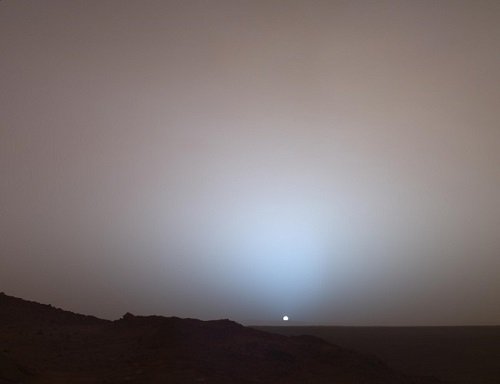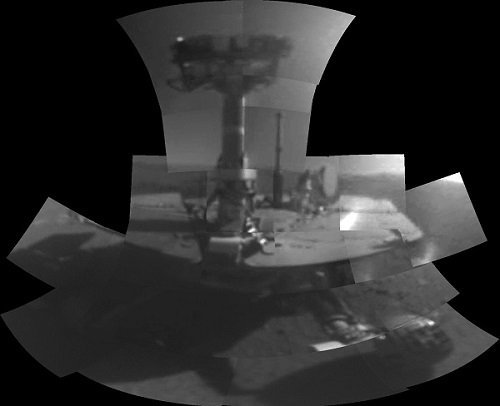Terraforming of Mars: a hope for the future of humanity or just fantasy
Space has always been a mystery to mankind. Hundreds of years ago, people peered out the night sky and wondered what is going on there, far away, behind the stars and the moon. Nowadays, thanks to modern technologies, people can discover space deeper, and one of the most discovered objects is Mars.
Mars also known as the Red Planet is the fourth planet from the Sun. It’s the second-smallest planet in the Solar System after Mercury.
Short information:
- Mars carries a name of the ancient Roman god of war;
- The reddish iron oxide prevalent on its surface gives it a reddish appearance so that why Mars is called the Red Planet;
- The mass of the Mars is 10.7% of the Earth's mass;
- With a radius of 2,106 miles (3,390 kilometres), Mars is about half the size of Earth;
- From an average distance of 142 million miles (228 million kilometres), Mars is 1.5 astronomical units away from the Sun;
- Length of year – 687 Earth days;
- Mars has two moons named Phobos and Deimos;
- The temperature on Mars can be as high as 70 degrees Fahrenheit (20 degrees Celsius) or as low as about -225 degrees Fahrenheit (-153 degrees Celsius);
- Planet type – terrestrial.
A terrestrial planet is a planet that is composed foremost of silicate rocks or metals. Within the Solar System, the terrestrial planets are the inner planets closest to the Sun, i.e. Venus, Mercury, Mars and Earth.
Mars is a cold desert world with evidence of ancient floods. Like Earth, Mars has polar ice caps, volcanoes, canyons, weather and distinct seasons. But they last longer than seasons here on Earth since Mars takes longer to orbit the Sun, as it's farther away. Mars’ similarities to Earth make it a prime target for exploration. The Red Planet is one of the most explored bodies in our solar system, and it's the only planet we've sent rovers to roam the stranger places. An international science fleet keeps constant watch on this space object and two robotic rovers Spirit or MER-A and Opportunity or MER-B are operating on the surface - sending back a steady stream of science data and images.

May 19th, 2005 - NASA's Mars Exploration Rover Spirit captured this gorgeous view as the Sun sank below the rim of Gusev crater on Mars. image source
Spirit, also known as MER-A (Mars Exploration Rover – A) or MER-2, is a robotic rover, active from 2004 to 2010. It was one of two rovers of NASA's ongoing Mars Exploration Rover Mission. Spirit successfully landed on Mars on January 4, 2004. Three weeks after, on January 25, 2004 twin rover Opportunity (MER-B) landed on the other side of the planet.
The rover Spirit became stuck in late 2009, and its last communication with Earth was sent on March 22, 2010. And another rover MER-B remains active as of 2018, having exceeded its operating plan by more than 13 years (in Earth time).

February 14−20, 2018, Opportunity's first selfie on Mars. image source
Potential for Life
Nowadays scientists don't expect to find living things currently inhabit on Mars. Instead, they're looking for life’s signs that existed long ago, when Mars was warmer and covered with water. Scientists believe that long before the life began on the Earth, the Red Planet was not red, but on the contrary, full of water and, perhaps, life. There is still no significant evidence of life on Mars, but the question of the life existence at present or in the past remains open.
The first statements about possibility of life on Mars date from the 17th century. Exactly in that time the polar caps of Mars were discovered. In the late 18th century, Frederick William Herschel (German-born British astronomer, composer and brother of fellow astronomer Caroline Herschel) proved they grow and shrink alternately, in the summer and winter of each hemisphere.
By the middle of the 19th century, astronomers have identified the Red Planet has some others similarities to Earth. For example, it was found the duration of the Martian day is almost the same as on Earth. Astronomers also found out that Mars’ axial tilt is similar to Earth's, which meant it experience seasons just as Earth does, but of nearly double the length owing to its much longer-term year. Length of Mars’ year is 687 Earth days. These observations led researchers to the idea that light spots on Mars are land, and dark, respectively - water, then was made a conclusion about the hypothetical presence of some form of life on the planet.
On April 2012, Scientists from the German Aerospace Centre (DLR) published research results during which was investigated the possibility of survival of terrestrial organisms in Martian conditions. Scientists have shown that polar and alpine lichens could survive on Mars. During 34 days planetary researchers simulated Martian conditions. The lichens collected in the Alps and Antarctic, were placed in an atmosphere with a Martian conditions. Jean-Pierre de Vera, a scientist at the DLR says that during this period, the lichens and bacteria continued to demonstrate measurable activity and carry out photosynthesis. So, the experiment confirmed that living beings have a chance to survive on Mars.
Science fiction authors like to fantasize about life on other planets and aliens. Exactly Mars most often mentioned as a potential planet for life. But, what if there is some truth in all these fantastic stories? What if Mars was a living planet, with flora and fauna, and even with some civilisation? And maybe the Red Planet suffered in collision with a huge meteorite, or maybe Martian civilization led its planet to death? Of course, the man’s mind can imagine many fantastic versions. But the truth is Mars is the only perspective planet for colonization.
In 1942 Astounding Science Fiction published a science-fiction story "Collision Orbit" by Jack Williamson. John Stewart Williamson, who wrote as Jack Williamson, was an American science fiction writer. In this story Williamson for the first time uses the term – Terraforming.
Terraforming - change in climatic conditions of planet, moon, or other cosmic body. It is the hypothetical process of deliberately modifying its atmosphere, temperature, surface topography or ecology to be similar to the environment of Earth to make it habitable by Earth-like life.

Artist’s rendition of a terraforming process on Mars. image source
Scientists began to think seriously about terraforming in the 1960s, when Carl Sagan (an American astronomer, cosmologist, astrophysicist, astrobiologist, science popularizer, and science communicator in astronomy and other natural sciences) published several articles dealing with the possibility of terraforming Venus.
Since the 1970s, Dr. Chris McKay (a planetary scientist at NASA Ames Research Centre, studying planetary atmospheres, astrobiology, and terraforming) and Dr. James Kasting (an American geoscientist and Distinguished Professor of Geosciences at Penn State University) made Terraforming Mars the main subject of their research. At the Astrobiology Science Conference in 2004, Chris McKay said he don't think we can terraform Mars, if terraforming is, as it was originally defined, making Mars suitable for human beings, but we can make Mars suitable for life. What we should do is warming it up, we know how to warm up planets, and we’re doing it on Earth. The same sorts of things actually would work on Mars.
The need to colonize other planets
The population of the Earth is constantly growing. Also, environmental and climate change are constantly occurring. Over time, all these factors could put under threat the existence of the entire earthly civilization. In addition to natural factors, such as changing the size and activity of the Sun, an important role can also be played by the consequences of the activity of the person himself, for example, a global catastrophe caused by the use of weapons of mass destruction. Therefore, life on another planet, with time, can become not only an opportunity or a desire, but a necessity. Scientists are already actively developing technologies for the possibility of migration to another planet, but the time for implementing projects for terraforming near-Earth space can at best be measured for decades or even centuries. But, Elon Musk has a very ambitious plan to get humans to live on Mars in 40 years.
Elon Musk and his private space development company SpaceX want to build on Mars a self-sustaining city. Elon thinks that the colonization of the Red Planet will take from 40 to 100 years and it will be necessary to carry out 10,000 flights. One ship can take on board 100 people with their luggage and supplies.
SpaseX – is a company that develops and manufactures advanced rockets and spacecraft, was founded in 2002. The ultimate goal is allow people to live on other planets.
It's really possible that one day Mars could be terraformed into an Earthly paradise, but not so soon. The distance between Mars and Earth is changing constantly as two planets spin around their orbits. In 4 years Red Planet will approach to the Earth at the closest distance, but it’s too soon for sending a crewed ship.
The next time Mars will repeat such an approximation in the mid-2030s and by then Elon Musk might be ready to send his first mission and create the first Martian colony by 2040.
Elon Musk says we are doomed if we stay on Earth.
My thoughts.
I'm a little sceptical about life on other planets, but I'm not sceptical about modern technologies and their further development. A few dozen years ago, no one can imagine that it would be possible to talk by the phone without wires, or even more - see interlocutor during the conversation. All modern technologies and everything that seems ordinary and familiar today, in the past have existed only on pages of fantastic stories. The same thing is terraforming – nowadays it seems a bit unreal and fantastic, but science doesn’t stand still and I think scientists will find way how to turn Mars into a living planet. But, as for me, it’ll be not so soon, not in our lifetime. Terraforming is theoretically possible, but this is very long and hard process. So, who knows, maybe in the future the interplanetary flight will be an ordinary daily flight and Mars will be a new home for many earthlings. I hope Steemit will be available there.
References:
https://www.space.com/190-terraforming-mars-experts-debate.html
https://en.wikipedia.org/wiki/Mars
https://solarsystem.nasa.gov/planets/mars/overview/
https://aeon.co/essays/elon-musk-puts-his-case-for-a-multi-planet-civilisation
http://www.dlr.de/dlr/en/desktopdefault.aspx/tabid-10081/151_read-3409//year-all/#/gallery/5671
http://bigthink.com/laurie-vazquez/the-tech-thatll-get-us-to-mars-according-to-elon-musk
http://www.spacex.com



Hi, I found some acronyms/abbreviations in this post. This is how they expand: